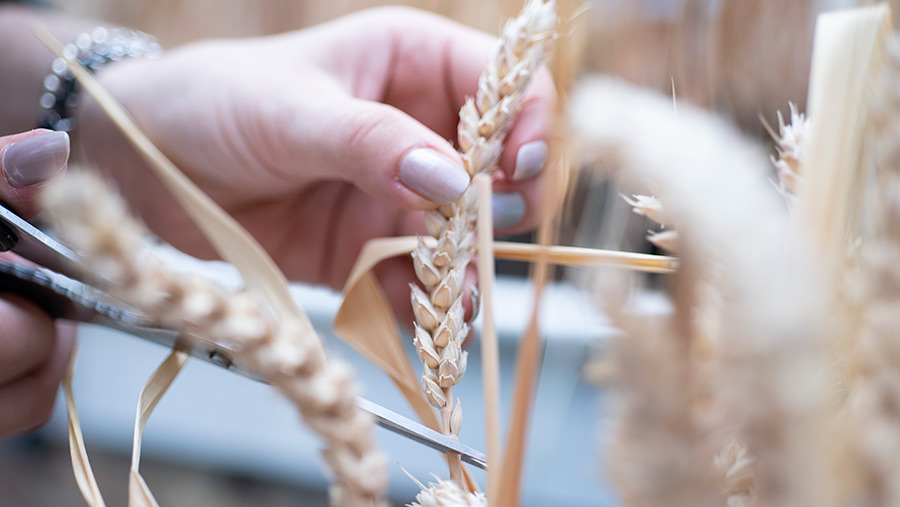How growers could benefit from pioneering gene-edited wheat
 © Rothamsted Research
© Rothamsted Research Wheat bred for low levels of a key amino acid could prove vital for food manufacturers meeting future limits on acrylamide, especially in breakfast cereals and biscuits.
Asparagine is a naturally occurring amino acid, and while most is made into protein, plants such as wheat can accumulate it as a free amino acid, explains Nigel Halford, a crop scientist at Rothamsted Research.
See also: New tech boosts slurry nutrition to improve crop performance
“And when you bake, toast or fry [as in the case of potatoes], it can lead to the formation of a toxic contaminant, acrylamide, which is known to be a carcinogen.”
The EU is moving towards having a maximum limit for acrylamide, which could affect exports and the UK government may follow suit with its own limit.
Currently, the EU has a benchmark level and Prof Halford says about 10% of food products are above the benchmark. This benchmark is described as a performance indicator and if food products are over this level, manufacturers need to show they are addressing the issue.
Challenge
However, the EU is talking about having maximum levels that are even lower. “This could be a big problem for the food sector.”
He explains that the key challenge is that acrylamide forms in similar ways to colour, flavour and aroma compounds in products such as bread, biscuits and breakfast cereals.
Acrylamide only forms at high temperatures, and is associated with fried, baked, roasted and toasted foods.
Alongside cereal-based products, these also include chips, crisps, roast potatoes and coffee.
Prof Halford adds that a number of methods for reducing acrylamide in food products by changing processing methods have been developed, but they are not applicable to all food types and sometimes affect product quality.
“For example, it’s a particular problem for those products that rely on toasting to get flavour into them, like breakfast cereals,” he said.
“One solution is to produce food ingredients with lower acrylamide-forming potential, such as rye and wheat grains with low levels of soluble [non-protein] asparagine.”
Rothamsted Research has started a five-year project to trial gene-edited wheat, produced using the CRISPR technique to “knock out” the asparagine synthetase gene, TaASN2.
Glasshouse trials have shown levels to be 70-90% lower in grain from gene-edited plants.
The project has now moved to the field-trial stage, with Europe’s first field trial of gene-edited wheat currently in the ground.
Performance
The aim is to see how well the wheat performs under field conditions.
As well as asparagine content, the trial will assess other factors such as yield, disease resistance and grain protein content, which have to stack up.
He also explains that fungal diseases and insufficient sulphur in the soil can increase asparagine levels and this will be assessed in the gene-edited wheat.
If it performs well, the wheat will be made available to breeders to incorporate in their breeding programmes, he says. However, this could be several years away
At the time of speaking to Farmers Weekly, the plots of edited Cadenza wheat were looking good at Rothamsted and the UK’s first-ever harvest of gene-edited wheat is set for this August.
What is gene editing?
The CRISPR/Cas9 genome-editing technique leads to small changes in the plant’s DNA, such as the deletion or insertion of short sections of DNA, or changes to the DNA sequence.
In this instance, it involved halting the function of a gene involved in the production of asparagine.
How does it differ from GM?
It differs from the GM approach in that by the end of the process there are no novel, foreign or additional genes. The sorts of changes to the wheat DNA are similar to those that occur naturally.
Rothamsted Research will be on hand at Cereals 2022, where visitors can hear Dr Sarah Raffan, the lead researcher on the field trial, give more details about her work.
Visitors can also learn about other Rothamsted trials, such as GM camelina that makes fish oils.

